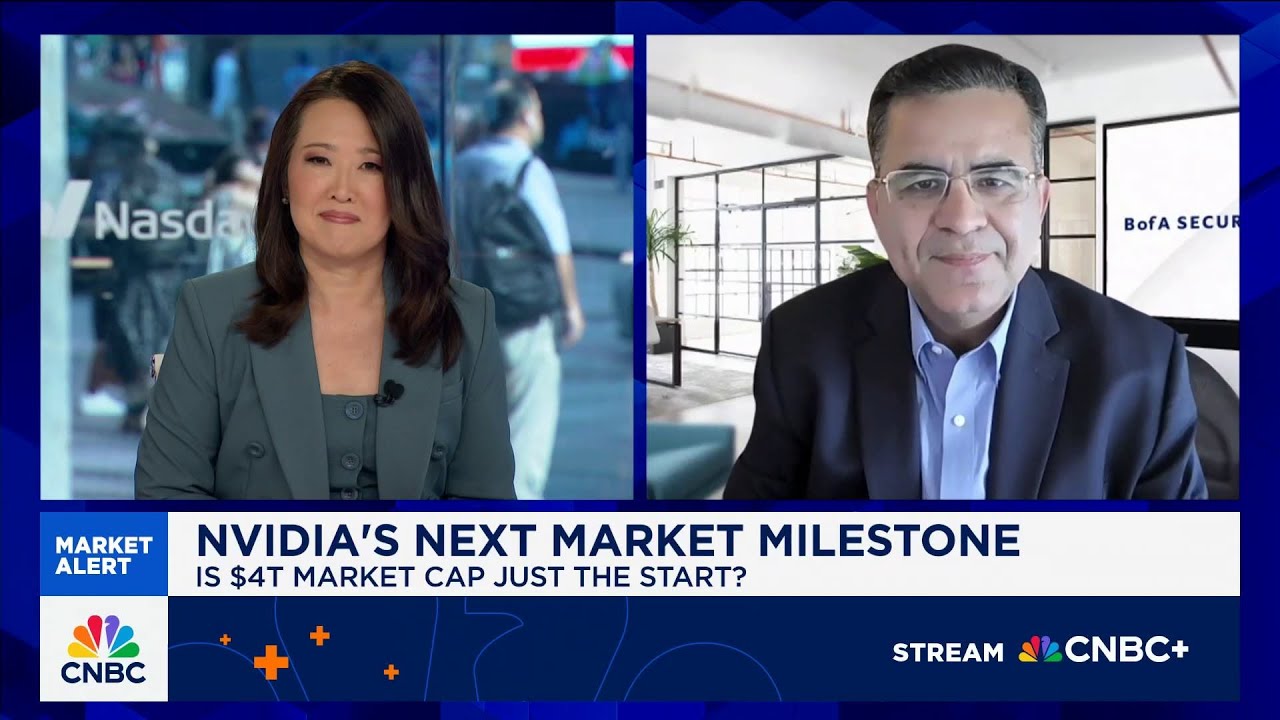Bank of America’s Vivek Arya highlights Nvidia’s dominant 80% market share in the rapidly growing $1-2 trillion AI market, projecting its net income to surpass major tech giants by 2026 and emphasizing the company’s superior integration of hardware, software, and developer ecosystems. He argues that despite emerging competitors and more efficient AI models, Nvidia’s strong financial outlook and innovation make it difficult to dislodge from its leading position in the AI chip industry.
In the discussion with Bank of America’s Senior Semiconductor Analyst Vivek Arya, the focus is on Nvidia’s impressive market position and its potential to become the first company to reach a $4 trillion market capitalization. Arya explains that Nvidia’s market cap is closely tied to the size of the AI opportunity and the company’s ability to monetize it. He draws a comparison to Apple, which holds about a quarter of the $1 trillion consumer electronics market and has a $3 trillion market cap, suggesting that Nvidia’s AI market, estimated between $1 trillion to $2 trillion, justifies its dominant valuation given its 80% market share.
Arya addresses concerns about competition from companies like Amazon, which are developing their own custom chips. He notes that custom chips have historically represented only about 10-15% of the total market and predicts this will remain stable. The rapid evolution of generative AI models makes it challenging for custom chip developers to keep pace, as success requires a seamless integration of silicon, software, and developer ecosystems—a complex feat that Nvidia currently manages better than others.
The analyst highlights Nvidia’s strong financial outlook, projecting that by 2026, its net income will surpass that of major tech giants like Microsoft, Apple, and Amazon. This financial strength supports the argument for Nvidia’s high market valuation, even when considering similar price-to-earnings multiples. Arya emphasizes that Nvidia’s dominant market share and ability to innovate make it difficult for competitors to dislodge the company from its leading position.
Regarding the emergence of more efficient AI models like DeepSeek, Arya points out that while such models can perform tasks with less computational power, they are not yet widely adopted or among the most downloaded applications. He suggests that DeepSeek represents a new class of reasoning models that actually increase computing demand, a factor that the market consensus may have underestimated. This indicates ongoing growth and complexity in AI workloads, which could further benefit Nvidia’s business.
Overall, Vivek Arya presents a bullish case for Nvidia, underscoring its dominant market share, robust financial prospects, and the challenges competitors face in the rapidly evolving AI chip landscape. He believes Nvidia’s combination of hardware, software, and developer support positions it uniquely to capitalize on the expanding AI market, making its dominant status difficult to challenge in the foreseeable future.
